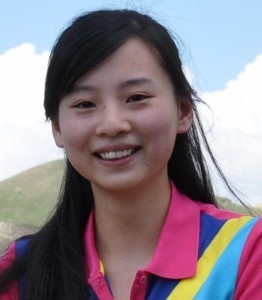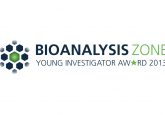2012 Young Investigator Award Finalist: Pan Deng

Nominee:
Nominated By:
Supporting Comments:
Bioanalysis Zone asked Pan to highlight one of her favorite published articles and explain her reasoning.
Deng P, Chen X, Zhang G, Zhong D. Bioanalysis of an oligonucleotide and its metabolites by liquid chromatography–tandem mass spectrometry.J. Pharm. Biomed. Anal. 52(4), 571–579 (2010).
What were the most difficult challenges encountered in this study? And how were they overcome?
The challenges in the LC–MS/MS method development of phosphorothioate oligonucleotide (PS-OGNs) were as follows: (1) PS-OGNs are not always easily analyzed by MS owing to nonvolatile cations such as sodium and potassium that accompany the negatively charged phosphate backbone. (2) Adequate chromatographic separation must be achieved to circumvent the possibility of cross-talk of mass signal between parent compound and metabolites. (3) PS-OGNs bind to proteins with greater affinity than phosphodiester OGNs, and therefore sample preparation is a critical step to separate the target PS-OGNs from matrix components and bulk proteins before further chromatographic separation. To get the most sensitive and selective assay, the exact composition of the mobile phase (concentrations of TEA and HFIP) was studied and optimized. Different sample preparation methods were tried and isolation of analytes via LLE using phenol/dichloroform and SPE was proved to be the best approach.
What made you decide to study this particular field of bioanalysis? What makes it so appealing?
Quantitative analysis of OGNs and characterization of their metabolism are important aspects of drug development and evaluation. Hybridization-based ELISA method, in general, provides the best reported assay sensitivity and throughput. However, this method might cause cross-hybridization and, subsequently, the overestimation of the parent OGNs. Moreover, the ELISA method development is time-consuming for preclinical application. Although LC–MS/MS has become a standard technique for the determination of small molecules and peptides in biological fluids, the application to quantitative analysis of therapeutic OGNs has been less successful. Therefore, I decided to study this field and develop robust LC–MS/MS methods in support of toxicity and pharmacokinetic evaluation of OGNs.
In your opinion, how has the research conducted in this study advanced the field of bioanalysis (i.e., future implications)?
Although application of LC–MS/MS to routine analysis of oligonucleotide is relatively new, our research provide strong evidence that this method appears to be an attractive choice, and it is to be expected that this application will grow in the future.
Colleague quotes
Here is what some of Pan’s friends and colleagues had to say about her.
Xiaoyan Chen, Shanghai Institute of Materia Medica, China
“Pan Deng has developed several sensitive LC–MS/MS methods for the determination of various compounds, especially the small polar molecules and oligonucleotides in biological matrix. She also investigated the metabolism mechanism of xenobiotics and discovered new metabolic pathways of drugs and environmental contaminants.”
Yan Zhan, Shanghai Institute of Materia Medica, China
“In spare time, she enjoys taking photos, especially nature photos that capture the wonder of our natural world.”
Xiaoyan Chen, Shanghai Institute of Materia Medica, China
“She really enjoys working in this field; her self-confidence as well as enthusiasm enables her to conquer difficulties in research work. Her consistent and hardworking personality will allow Pan to develop the required academic skills and eventually lead to a career in the area of bioanalysis.”




